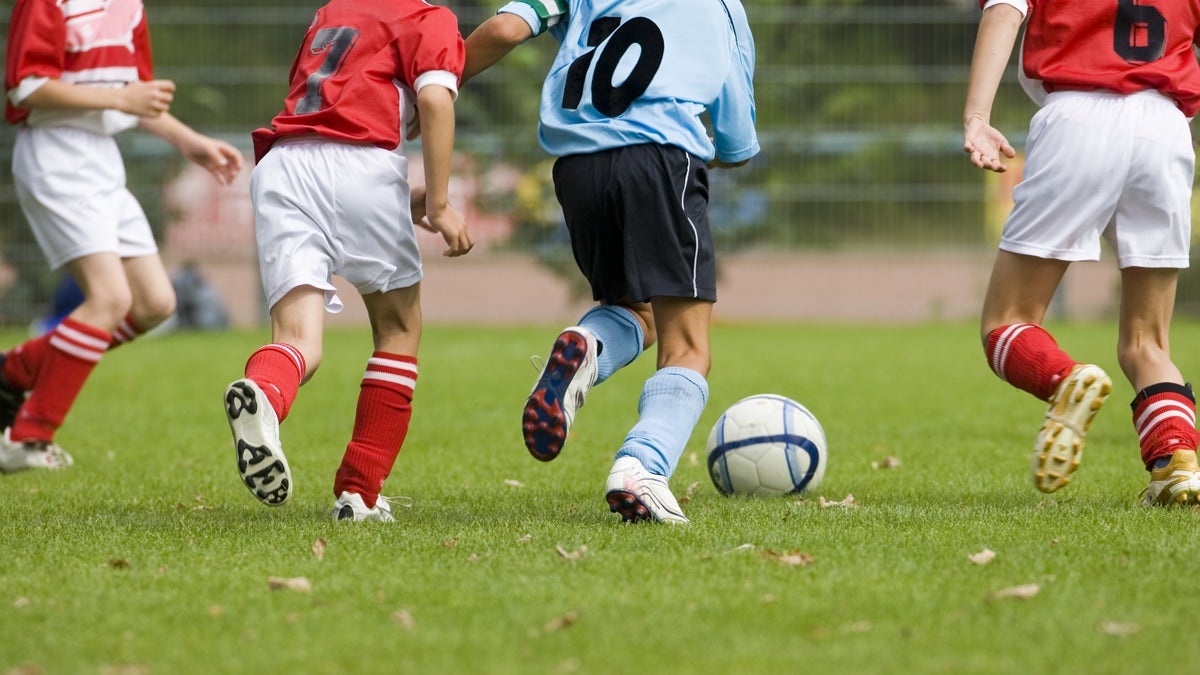‘Who am I?’ Get outside and find out.
 Soccer game image courtesy of Shutterstock.com) " title="shutterstock_soccer_1200x675" width="1" height="1"/>
Soccer game image courtesy of Shutterstock.com) " title="shutterstock_soccer_1200x675" width="1" height="1"/>
(Soccer game image courtesy of Shutterstock.com)
Census data indicate more Americans are settling down than skipping town—but everything else is speeding up: less sleep, more work, more time online. We’re forgetting the role our environment plays in casting our sense of self. I should know.
The following is a work of opinion submitted by the author.
“Probably never before in the history of the United States has there been internal population movement of such magnitude as in the past seven eventful years,” reads the first “Current Population Report” of the U.S. Census Bureau, which charted geographic mobility for the years between April 1940 and April 1947.
But now Americans are staying put, with the most recent Census data indicating a mobility rate of less than 12 percent for the year between 2011 and 2012, compared to a rate of 20 percent for the year between 1947 and 1948.
What’s more, recent Pew Research data reveal that an appreciable 37 percent of Americans have never left their hometown.
In sum, Americans are settling down. Everything else, though, is speeding up. We now sleep less, work more, and are increasingly immersed in Facebook, Instagram, LinkedIn, and a variety of other social networking websites. In the meantime, however, we’re forgetting our environment and the role it plays in casting our sense of self. I should know.
Where is home?
I’ve experienced my fair share of mobility, starting with my family’s first move from my birthplace, Buenos Aires, to New York City when I was three months old. We then bounced through New Jersey and Michigan, back to Argentina, and finally back to New York City in 2008.
I’ve always lacked a regional identity, which I am reminded of every time someone asks, “So, where are you from?”
I could say I am from Argentina, which is technically accurate, but much to my own chagrin, I identify little with family or culture there. And in spite of my three adolescent years in the country’s capital, I attended an international school—not very Argentinean.
I could also say I’m from New York, which is where my family lives, but I wasn’t born there.
For lack of regional identity, I steeped myself in sports, soccer in particular. As a result, I harbor a number of colorful, athletic memories in outdoor settings. Sports, if anything, gave me a badge of sorts—a marker that, fortunately for me, carries over readily from region to region. But athletics don’t confer or supplant a regional identity.
As I’ve rehearsed answers to questions about my place of origin, I’ve become acutely aware of the decreasing importance geography has on identity among youth in America. Surely, our hailing from a particular region may give others some expectations about who we are.
But it seems to me that people my age want to define themselves within an imagined sphere of labels and associations, gradually relegating race, nationality, family history and a host of other immovable identity markers. This effect is perpetually heightened by the internet and social media.
The result is a relatively fluid but nonetheless internal conception of “I” for teens and twenty-somethings. This is laudable in some respects, but we cannot forget the importance of recognizing ourselves from the outside.
Get out
Take my experience, for example. Soccer established the amplest area of common ground with family members in Argentina. I may not have been rich or fluent in their cultural currency, but I could at least discuss the latest soccer games with my Argentine cousins. And for acquaintances, those with whom I was playing a casual pick-up game, the sport helped me shed my status as the kid “from everywhere” and move toward the image of the kid “who plays soccer.”
That is not to say physical activity is necessary for constructing an identity. But my story does underscore the significance of engaging with our environment and associating ourselves with things beyond us. Unfortunately, however, the outside world is seeing less of us: In 2008, University of Illinois-Chicago researchers found that we spend 25 percent less time outside than we did in 1987.
Part of building an out-of-self identity necessarily involves cultivating meaningful relationships with others. To be sure, friendships established across wi-fi may share many qualities of friendships in person, but they lack presence and proximity. A person’s aura, posture, and fleeting facial contortions, betraying the incommunicable aspects of their person, are quite irreplaceable.
The lesson, then, is simple: In the midst of this paradoxical confluence of physical settlement and virtual commotion, let’s attune to the role physical backdrops play in identity-building. It’s important to remember we are as much expressions of our self-conception as of our physical environments. The former we constantly fix; the latter, we sometimes forget, fixes us.
—
Tomas Piedrahita is a history major in his sophomore year at the University of Pennsylvania. His writing has been published in various Spanish-language newspapers across the country and featured in a political magazine on Penn’s campus.
NOTE: The Pew survey defines a mover as someone who has changed communities, while the Census Bureau uses a broader definition that also includes people who moved to a new home in the same community.
WHYY is your source for fact-based, in-depth journalism and information. As a nonprofit organization, we rely on financial support from readers like you. Please give today.

